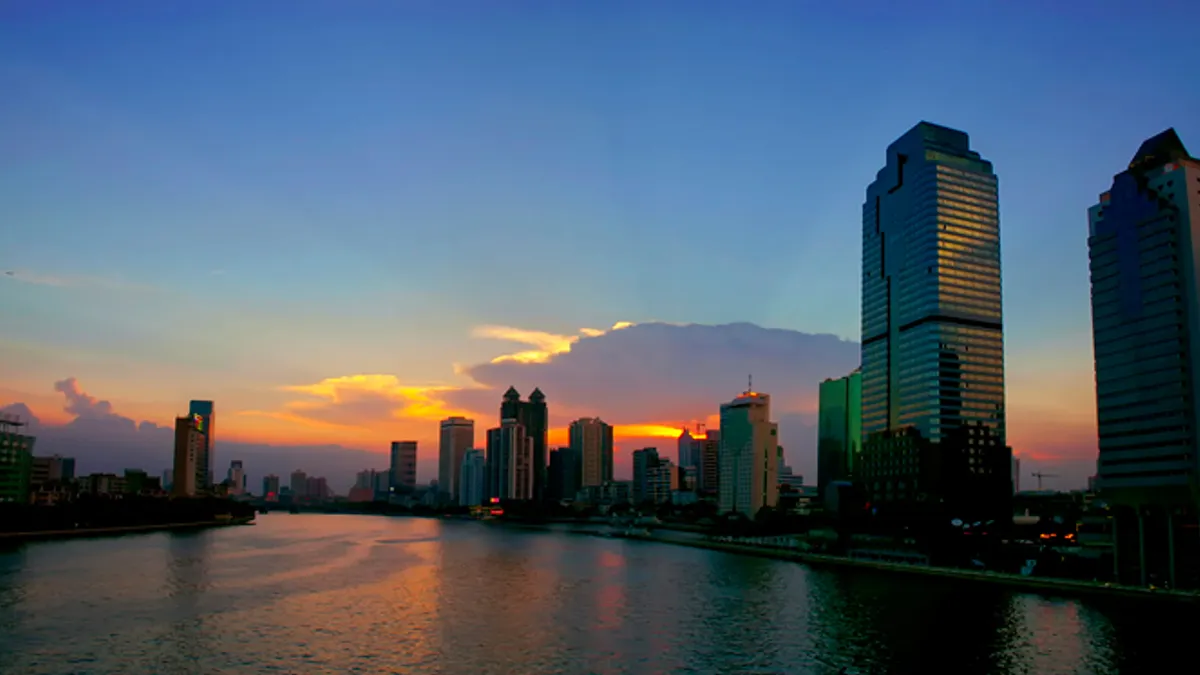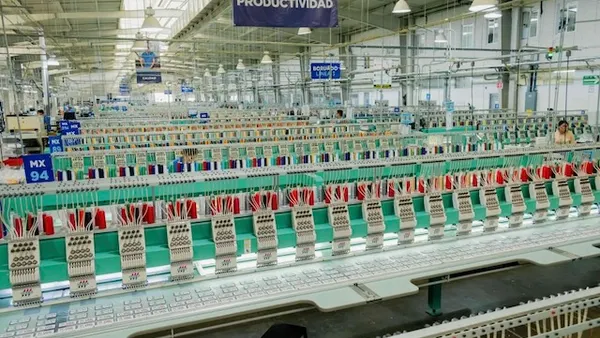Dive Brief:
- Guangzhou, China and Dongguan, China, which are trade and manufacturing hubs located on the Pearl River Delta, are two cities with the greatest exposure to sea-level rise under current forecasts, according to a report from Verisk Maplecroft. The report looked at 500 cities with populations of one million or more globally and rankings were determined by measuring the amount of urban area at risk from sea level rise.
- "While sea level rise is seen as a longer term problem, it needs to be considered today, as we know that the buildings, airports and power plants constructed in the coming years are still going to be standing in 50 years’ time, when the effects will start to be felt," the report reads.
- The infrastructure supply chains rely on in the region will also be at risk as the tides continue to rise. Sea level rise will affect more than 13% of rail assets in the Pearl River Delta and more than 12% of roads, the report said. The Pearl River Delta is a region in Southern China near Hong Kong that flows into the South China Sea.
Dive Insight:
The Pearl River Delta region is no stranger to flooding. Guangzhou and Dongguan dealt with major flooding in the spring of 2014 that resulted in the inundation of more than 100 factories and shops, according to The New York Times. Urban expansion has exacerbated issues in coastal cities that have developed over natural barriers like mangrove swamps, the paper noted.
Flooding is expected to get worse in the coming decades as global warming melts sea ice and glaciers. The projected mean sea-level rise for 1.5°C of global warming has a range of 0.26 meters to 0.77 meters, according to the Intergovernmental Panel on Climate Change. Increases will be even higher if temperatures rise beyond the 1.5°C threshold.
As waters rise, though, the manufacturers in the Pearl River Delta continue to churn out inventory for companies around the world. The Pearl River Delta is home to large automotive, petrochemical and electronics manufacturing operations and the region single-handedly generates 3.8% of global wealth, according to Verisk Maplecroft.
"Some categories of the toy industry in the [Pearl River Delta] have a world production share in excess of 60%," according to the Hong Kong Trade Development Council. "Other leading products include footwear, lighting fixtures, furniture, etc, to name but a few."
The region may be a manufacturing behemoth, but some companies have already started looking for alternative sourcing locations as a result of increasing labor cost and Chinese currency appreciation, according to a 2012 analysis of the region by researchers from The University of Hong Kong and University of London. The researchers found that companies looked to cheaper locations within China, India and Mexico — a strategy many companies have followed during the U.S.-China trade war.
The Pearl River Delta and other cities around the world will need to invest in flood-prevention infrastructure to ensure companies are able to maintain operations in the region. And companies will need to consider flood risk when looking at where to locate, Verisk Maplecroft said.
"Companies looking at longterm real asset investments, such as new infrastructure, power plants or data centres, will need to price in resilience measures or consider alternative options," the report reads.














